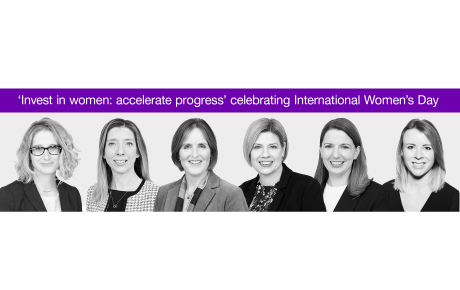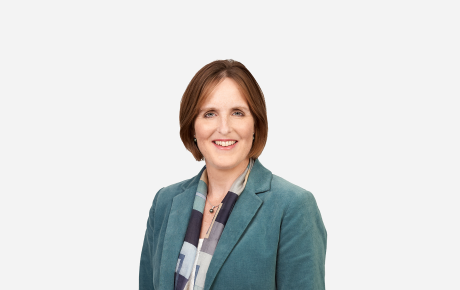
Reaching a verdict on the dry run
Last year, the London Market tested its resilience to two huge simulated catastrophes. Some of those involved give their verdict on the exercise.
The two catastrophes chosen to test the London Market's financial muscle and speed of response were a large-scale power blackout in the US followed by the biggest-ever hurricane hitting downtown Miami. The in-depth simulation, lasting two weeks, was the first of its kind and provided a number of lessons for the market. We asked four senior market figures for their opinions of the exercise, what surprised them about its conclusions, and what should happen next.
What was your opinion of the exercise at the beginning, and has your view changed now you’ve been through it?
Jonathan de Beer, Senior Adviser to the Director General, the Association of British Insurers: “At the ABI I was previously responsible for leading the industry’s Solvency II negotiations and its implementation. I have always thought that following such a big regulatory change it would be a valuable exercise for the insurance industry and the regulators to test how they would respond to a market-turning event. Having been through the exercise it has only reinforced my view that having the right processes in place and open lines of communication between the industry and the regulators are essential for the market to respond to an event in the most effective way.”
Paul Knowles, CEO, JLT Specialty: “I thought it was an interesting intellectual piece at the beginning of the exercise, but as we started to work through the process I realised the true extent of its value – not just for the organisations that were taking part, but also for the wider London Market in terms of retaining its global leadership position.
...having the right processes in place and open lines of communication between the industry and the regulators are essential for the market to respond to an event in the most effective way.
What did you learn from the exercise?
JdB: “One of the important lessons to come out of the exercise is the need for the industry to respond quickly following an event and to be able to speak with one voice to the regulators and government. At the ABI we have experience of responding quickly to recent major events, including UK flooding and Brexit. We already work closely with other London Market bodies including Lloyd’s, the London Market Group, Lloyd’s Market Association and the International Underwriting Association and I think the exercise reinforces the need for a collaborative approach in preparation for a market-turning event.”
PK: “The exercise was extremely useful and work has already started as a result of the important lessons we learned. Currently we are refreshing our own internal plans so they are fit for purpose and allow us to continue to deliver a client focused service during the most stressful of times.”
Chris Beazley, CEO, the London Market Group (LMG): “The report identifies the need for the market and individual participants to actively engage with key stakeholders in order to reinforce its value proposition in a time of crisis. Maintaining confidence in the market through clear messaging is vital and will require planning to take place ahead of time. The LMG, as a representative of the LMA, Lloyd’s, IUA and LIIBA, could potentially have a role to play here and we are giving this due consideration.”
What surprised you about the exercise?
JdB: “What pleased rather than surprised me about the exercise was the level of support and engagement from across the insurance industry. As a trade body, experience has shown me that cross-industry projects rely upon everyone working together to make our industry as effective as possible for our customers. It is a great credit to London Market and the unique ecosystem of the UK insurance industry that this exercise had active support from insurers, reinsurers, brokers, both regulators, the government and trade associations.”
PK: “The ability of the market to sustain this level of loss. Although it is impossible to recreate real-life experiences and even to simulate contagion risk associated with this scale of event, it did provide a strong degree of confidence in the London Market's ability to respond - not only to customers in distress, but also those not directly impacted but needing insurance to continue to deliver their own business objectives.”
Do you agree with the three main recommendations?
JdB: “The three recommendations seem the right ones, especially the need to collaborate with the PRA on expectations and response to a market-turning event. Solvency II is a new regime for both the regulators and the industry and a collaborative approach is the best way to help both sides meet their objectives and responsibilities to clients and policyholders.”
PK: “Yes, and I don’t think you can concentrate on too many more as they start to become company specific and lose their impact. For me the client is always central to this, both in terms of those directly affected through the actual event, and those that rely on insurance to conduct their business. It is important we always examine the output of this exercise through the customer lens.”
What would you like to see happen next?
JdB: “I would like to see the industry and regulators implement the recommendations in the report and most importantly maintain the open and constructive dialogue that made the exercise itself such a success. The report is also a great example of why the London Market is an excellent market for writing and placing complex risks. We will be working closely with the Government to ensure the report can be used to support the London Market’s profile and demonstrate why it is such an important part of the UK’s economy.”
PK: “It would be good to see some of the other global hubs undertake a similar sort of exercise, with a view to sharing our experiences at a higher level. The global nature of our business means that catastrophic events will impact all markets, and so understanding the potential contagion and interplay across the globe might provide clients with more confidence in the robustness of the insurance market as an effective risk management tool.”
CB: “The market should give serious consideration to how it can build on this great foundation so that, when the time comes, we don’t look back on this valuable piece of work and think, ’if only we’d paid more attention to the outcomes and recommendations’.
“Everyone has said how much they learned both collectively and individually from the exercise – what processes they could do better and who they should be interacting with in situations like these.
“Relationships between stakeholders need to be built upon where necessary, expectations set and plans put in place so that we can provide ongoing support to our clients in their time of crisis.”
The global nature of our business means that catastrophic events will impact all markets, and so understanding the potential contagion and interplay across the globe might provide clients with more confidence in the robustness of the insurance market as an effective risk management tool.
Do you think the exercise should be repeated in future, and if so, how frequently?
JdB: “I don’t believe that an exercise of this scale needs to be repeated too frequently. The report is a very thorough examination of what is required from both the industry and regulators to respond effectively to a market-turning event. Now is the time to implement the findings and continue to support the London Market as a great place to trade and invest in.”
PK: “Yes, I think that this could be done every three to five years. Hopefully, the work done in this exercise will lay the foundations for any future work and help us to further focus on any lessons learned, but operating in such a dynamic market place means repeating the exercise will always be extremely worthwhile.
CB: “There can be no doubt that being prepared is critical, especially when reacting to significantly challenging, fast-changing and uncertain scenarios. Scenario testing and preparedness is not a one-off exercise, it should be part of business as usual.
“But being visibly prepared is different and has tremendous value as this exercise has demonstrated very clearly. The significant attention it generated shows that our many stakeholders are watching with interest.
“So, undertaking the exercise again is to me really important if we are to demonstrate collective credibility to our clients, investors, rating agencies and other global markets. It sits very comfortably alongside other activities that the LMG is leading, particularly in developing a value proposition for the London Market.”
Scenario testing and preparedness is not a one-off exercise, it should be part of business as usual.
Adam Rushin, Director of Operations, Hiscox London Market
“The first thing to say is that conducting the dry run was itself a big achievement. Getting 28 players from across the market to work together to stress test their resilience to a market-turning event, as well as to discuss how best to support our clients and work through the challenges created by a mega-catastrophe is a real milestone in a market that is renowned for its competitiveness.
“A key challenge to come out of the dry run is the need for the London Market to collaborate effectively with the PRA to understand what they would expect from us if such an event were ever to occur. In the exercise, we were given the gross loss on the first day of both scenarios, whereas in real life it would normally take us a couple of weeks to work that figure out for ourselves. We need to continue to work with the PRA to understand what they would expect us to do during the time we are calculating our exposure. We would work quickly to address the PRA’s key concerns, however flexibility may be required depending on the specific nature of any future event. That’s crucial to determine how the London Market would react to such a crisis.
“The wide divergence among insurers of the implications of these events on rates and their new business surprised me. They seem to have divided into three groups: those who saw it as a big opportunity to write more business; those who saw it as a good prospect to do more; and others who really didn’t expect it to have very much impact on their growth plans at all. Perhaps that’s a reflection of how they approached the exercise.
“The exercise suggested that the industry has access to sufficient resources to cope with the extraordinary losses witnessed in this dry run, however it did highlight some operational challenges as well as the financial and capital challenges. For example, the scramble for loss adjusters to assess the damage could be an issue. So it was very useful for us to begin to discuss a coordinated approach across the market with the possibility of sending loss adjusters into a disaster zone who work for the London Market as a whole, rather than for individual companies.
“Also, the sheer volume of claims that would come from such a big event would present a challenge. It would be a test of the new electronic claims handling processes that have been implemented in the market since 9/11, and an event on this scale would definitely force insurers to prioritise which claims to process first. But, on the whole, the claims picture was more positive than might have been expected, particularly for the second event, which would be the biggest-ever catastrophe to have occurred.
“The dry run has definitely changed how Hiscox would react to a big event, and has led to major changes in how our ‘war room’, which would deal with a crisis like this, is composed and how it acts.
“A big difference between today and 2001 is that many of the London underwriters – and brokers – are now part of global businesses. These companies’ interests were broadly the same as those of the London Market, and so, in the aftermath of 9/11, the decisions they took benefited the market as a whole. Whereas today no one can really predict how these global businesses will react to a mega-catastrophe, and whether they will let their London companies, rather than one of their other units based around the world, write the new business that may come as a result of the market dislocation.
“I think it would definitely be worth repeating the dry run, as it was a very valuable and productive exercise. My personal view would be that it would be good to do it again in about five years’ time, so that it retains its impact.”




